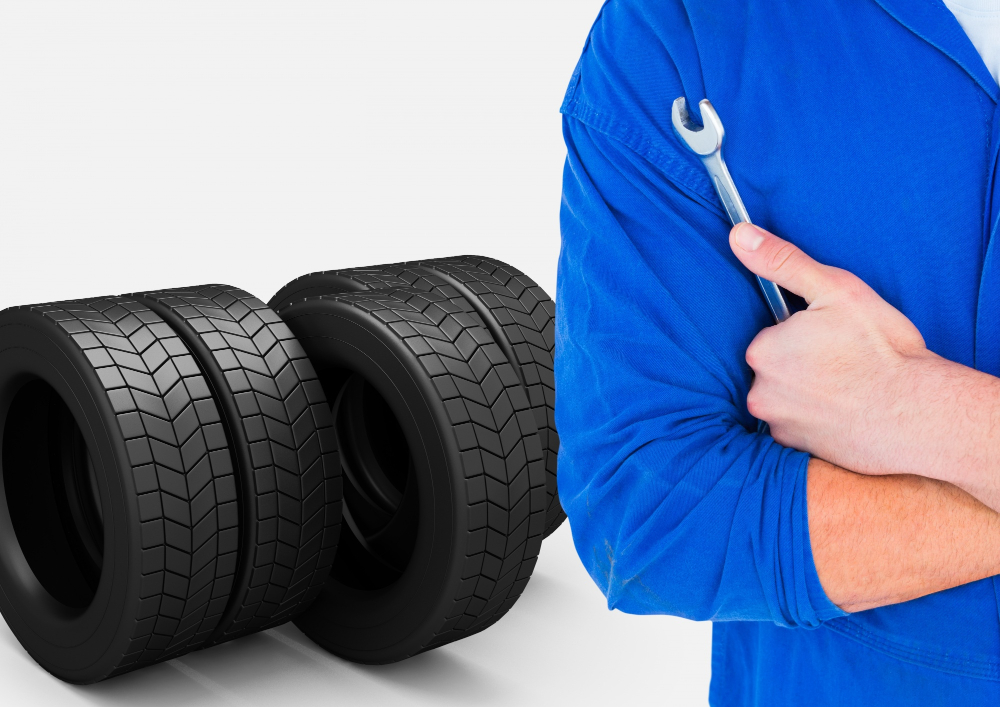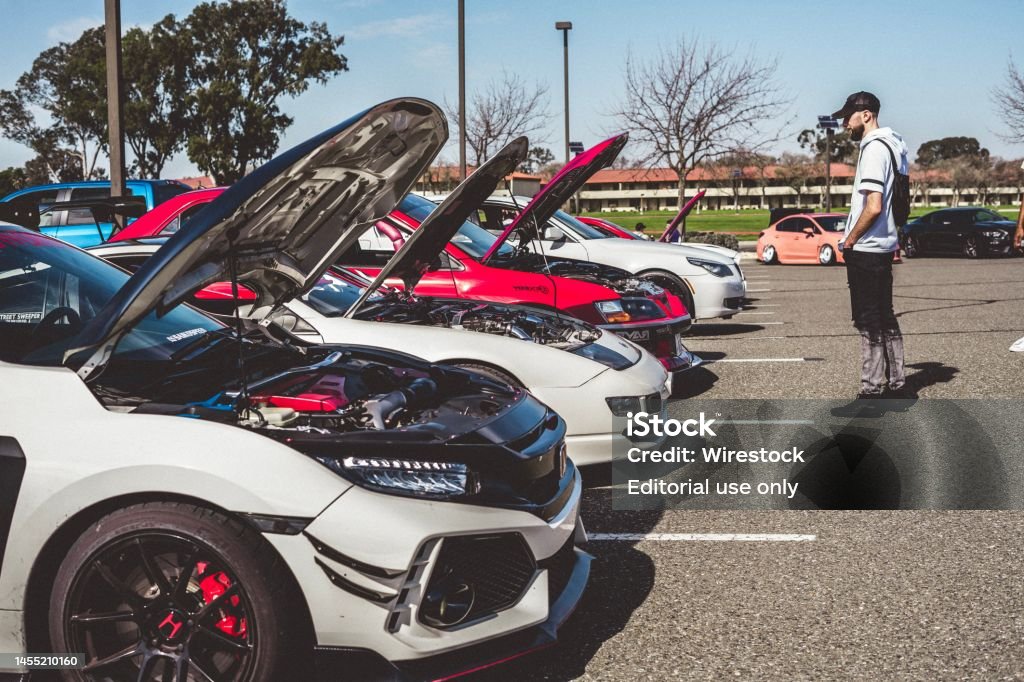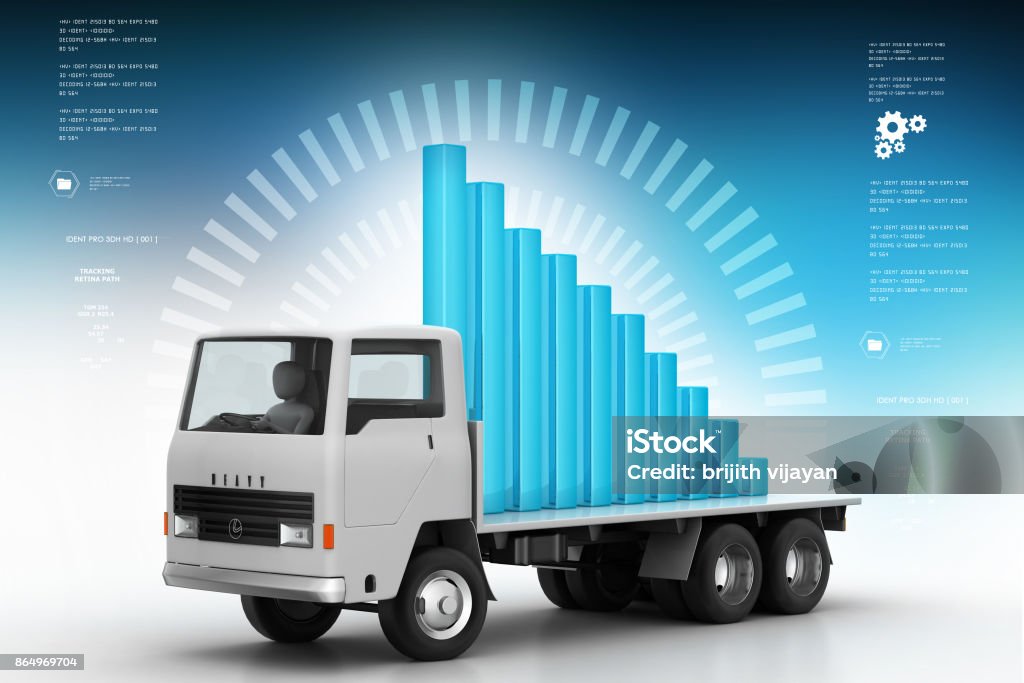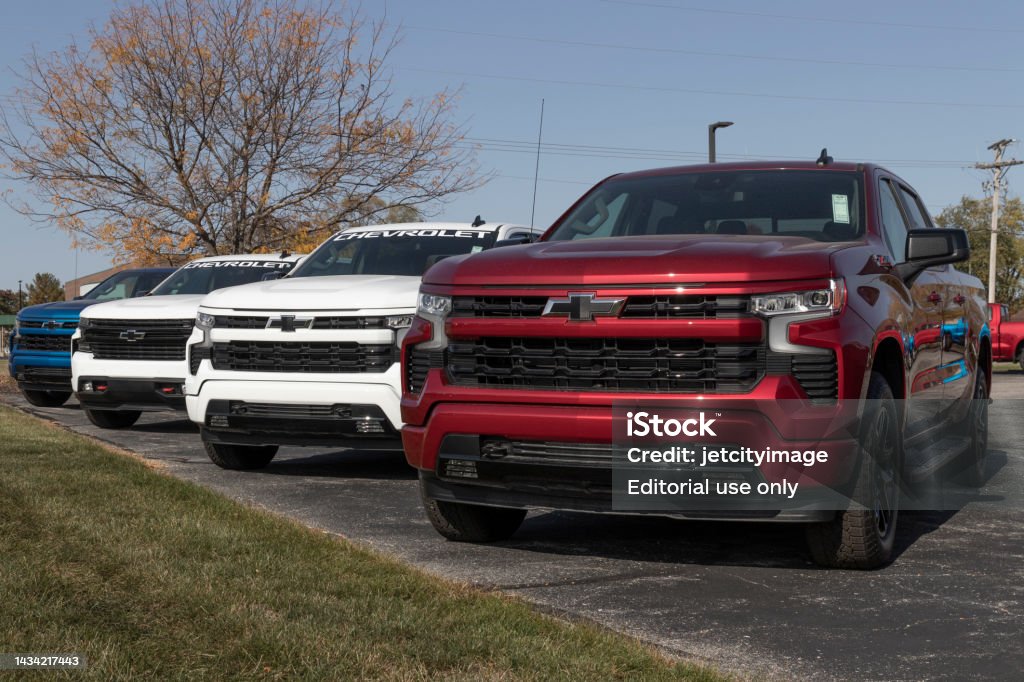General
Tire Durability for Isuzu Long-Haul Trucks

In the world of logistics and freight transport, tire durability is one of the most critical elements that determine efficiency, safety, and overall operational costs. For Isuzu long-haul trucks, which are built for endurance and reliability, having the right set of durable tires can make all the difference. Known for their robust engineering and performance on long-distance routes, Isuzu trucks are a popular choice among fleet operators and transport companies worldwide. However, no matter how advanced the truck, its performance heavily depends on the condition and durability of its tires. This article delves deep into the importance of tire durability for Isuzu long-haul trucks, the factors that influence it, maintenance practices, and how to choose the best tires for long-haul operations.
Why Tire Durability Matters in Long-Haul Trucking
Long-haul trucking involves extended periods of travel, often crossing state or national boundaries and covering thousands of kilometers. In such operations, tire durability becomes essential for several reasons. First, frequent tire failures can lead to downtime, which disrupts delivery schedules and increases costs. Second, tire blowouts on highways can be hazardous, posing serious safety risks to the driver and other road users. Lastly, durable tires ensure better fuel efficiency, which is crucial for long-distance journeys where fuel expenses account for a significant portion of operational budgets.
Unique Demands of Isuzu Long-Haul Trucks
Isuzu long-haul trucks are designed with a blend of fuel efficiency, load capacity, and driving comfort. These trucks often carry heavy loads across varied terrains and climates, demanding a lot from their tires. The tires must withstand high temperatures from extended highway driving, resist wear from carrying heavy cargo, and maintain traction in diverse weather conditions. This makes tire selection and maintenance especially critical for Isuzu truck operators aiming to maximize performance and longevity.
Key Characteristics of Durable Truck Tires
For Isuzu long-haul trucks, tire durability is defined by several core characteristics:
- Tread Life: Long-lasting tread is crucial. Deeper treads generally offer better traction and longer usability.
- Heat Resistance: Long hours on asphalt generate a lot of heat. Tires must resist overheating to avoid blowouts.
- Load Rating: Tires must be rated to carry the specific weight requirements of Isuzu’s long-haul models.
- Sidewall Strength: A strong sidewall resists punctures and abrasions that commonly occur on highways.
- Rolling Resistance: Lower rolling resistance improves fuel efficiency, which is a priority in long-haul operations.
Factors Affecting Tire Durability
There are multiple factors that affect how long truck tires last, including:
- Driving Habits: Harsh braking, sudden acceleration, and speeding increase tire wear.
- Load Weight: Overloading reduces tire life significantly due to excessive pressure and heat.
- Road Conditions: Rough or poorly maintained roads cause quicker tread deterioration.
- Weather Exposure: Extreme temperatures and UV exposure can degrade rubber over time.
- Tire Pressure: Both under- and over-inflated tires wear out faster and unevenly.
- Tire Quality: Premium brands often provide better materials and construction, contributing to longer life.
Importance of Regular Tire Maintenance
Routine tire maintenance is essential for preserving tire durability. For Isuzu long-haul trucks, this includes:
- Frequent Pressure Checks: Maintaining the correct PSI improves safety and wear resistance.
- Tread Depth Monitoring: Regular checks help ensure the tires have enough grip and are not nearing the end of their life.
- Wheel Alignment: Misaligned wheels cause uneven wear and shorten tire lifespan.
- Rotation: Periodic tire rotation helps distribute wear evenly across all tires.
- Visual Inspections: Spotting early signs of damage, such as cuts or bulges, can prevent accidents and unplanned downtime.
Best Tire Options for Isuzu Long-Haul Trucks
Choosing the right tires plays a significant role in overall durability. Some top tire models and brands known for performance with Isuzu long-haul trucks include:
- Michelin X Line Energy Z: Known for low rolling resistance and long tread life.
- Bridgestone M720: Offers excellent traction and heat resistance.
- Goodyear Fuel Max LHS: Designed for highway use with a focus on fuel savings and durability.
- Continental Conti EcoPlus HS3: Balanced performance, suitable for various load conditions.
- Yokohama 709ZL: Provides a good mix of durability and cost-effectiveness.
Fleet managers should always consider the specific truck model, load capacity, and route conditions when selecting tires for Isuzu trucks.
The Role of Tire Technology in Enhancing Durability
Modern tire technology has significantly enhanced the performance and durability of long-haul truck tires. Features such as advanced tread patterns, silica compounds for better grip, and reinforced sidewalls are now standard in premium tires. Additionally, smart tire technology—such as sensors that monitor temperature and pressure in real-time—is gaining traction among fleet operators. These innovations allow for preventive maintenance and can significantly extend tire life by identifying issues before they escalate.
Cost-Benefit Analysis of Investing in Durable Tires
Durable tires often come with a higher upfront cost, but the long-term savings can be substantial. High-quality tires reduce the frequency of replacements, improve fuel efficiency, and minimize the risk of costly breakdowns. For fleet operators using Isuzu long-haul trucks, these benefits translate into fewer delays, lower maintenance costs, and improved profitability over time. It’s a clear example where investing more initially can yield better returns in the long haul.
Environmental Impact of Durable Tires
Using durable tires is not just economically smart—it also supports sustainability goals. Longer-lasting tires mean fewer replacements, which results in reduced waste and lower raw material consumption. In addition, fuel-efficient tires reduce greenhouse gas emissions, aligning with environmental regulations and corporate social responsibility targets. Isuzu truck operators looking to green their fleet operations should consider the environmental advantages of high-durability tires.
Training Drivers for Tire Longevity
Even the best tires can wear out quickly if not treated properly. Driver training plays a critical role in ensuring tire longevity. Drivers should be trained to:
- Avoid sudden starts and stops
- Monitor tire condition and report abnormalities
- Maintain proper speeds and avoid overloading
- Understand the importance of tire pressure checks and routine inspections
By incorporating tire care into driver training programs, companies can extend the life of their tires and improve overall safety.
When to Replace Tires on Isuzu Trucks
Knowing when to replace tires is key to maintaining road safety and truck efficiency. Indicators include:
- Tread Depth Below Legal Limit: Typically, 4/32” for steer tires and 2/32” for drive tires.
- Visible Cracks or Bulges: Signs of structural weakness that can lead to blowouts.
- Frequent Air Pressure Loss: Could indicate punctures or faulty valves.
- Vibration or Noise While Driving: May point to internal tire damage.
Regular checks ensure tires are replaced before they become a hazard or disrupt operations.
Conclusion
Tire durability is a cornerstone of efficient and safe long-haul trucking, particularly for Isuzu trucks that are engineered for high performance under demanding conditions. Selecting high-quality tires, performing regular maintenance, leveraging modern technology, and training drivers appropriately all contribute to extended tire life. While the upfront investment in durable tires may seem high, the long-term benefits—including cost savings, improved safety, and environmental responsibility—make it a smart business decision. For fleet managers and operators of Isuzu long-haul trucks, prioritizing tire durability isn’t just about maintaining vehicles—it’s about ensuring sustainable and profitable operations on every mile of the journey.
General
Different Car Mods That Enhance Honda Performance

When it comes to purchasing a car, financing is a crucial part of the process for many buyers. Understanding the ins and outs of car financing can help you avoid costly mistakes and ensure that you get the best deal possible. If you’re in the market for Kennewick cars, knowing how to navigate the financing process will enable you to make informed decisions. Whether you are buying new or pre-owned, choosing the right financing options is key to ensuring that you are financially comfortable with your purchase. In this article, we will discuss some helpful car financing tips that can guide you through the process when buying from Kennewick dealerships, ensuring you get the most value out of your car purchase.
Check Your Credit Score Before You Shop
One of the most important aspects of securing car financing is understanding your credit score. Your credit score is a primary factor in determining the interest rate and terms of your car loan. Before you start shopping for a car, it’s essential to check your credit score to know where you stand. A good credit score will typically result in a lower interest rate, while a lower score may lead to higher rates or even denial of credit.
You can request a free credit report from one of the three major credit bureaus: Equifax, Experian, or TransUnion. If you find any errors on your report, take the time to dispute them before applying for financing. If your credit score is on the lower end, consider working on improving it by paying off outstanding debts, making timely payments, and reducing your credit card balances.
Set a Realistic Budget
Before diving into financing options, it’s essential to establish a realistic budget for your car purchase. Knowing how much you can comfortably afford to pay each month is critical for ensuring that you don’t stretch your finances too thin. When considering a car purchase, be sure to factor in not only the cost of the vehicle but also insurance, maintenance, fuel, and registration fees.
While cars are available at a range of prices, setting a budget will help you narrow down your choices and avoid falling in love with a car that is out of your financial reach. A good rule of thumb is that your car payment should not exceed 15% of your monthly take-home pay. This will ensure that you have enough room in your budget for other expenses.
Save for a Down Payment
Having a substantial down payment can make a significant difference in your car financing terms. The larger your down payment, the less you will need to finance, which can lower your monthly payments and reduce the amount of interest you’ll pay over the life of the loan.
For most cars, a down payment of at least 10% of the purchase price is recommended. If you can afford to put down more, such as 20%, this can significantly reduce your monthly payments and improve the chances of getting a lower interest rate. Saving for a down payment can also show lenders that you are financially responsible and committed to the purchase.
Explore Financing Options
When you are looking to finance a car, you’ll have several options to choose from. Many dealerships offer in-house financing, but it’s always a good idea to explore other options to find the best deal for your financial situation. The main financing options include:
- Dealership Financing: Many dealerships offer in-house financing, where you borrow money directly from the dealership. While this can be convenient, make sure to compare interest rates with other lenders to ensure you are getting a good deal.
- Bank or Credit Union Loans: Banks and credit unions often offer competitive loan terms and may provide lower interest rates than dealerships. It’s worth shopping around for the best rate and terms before committing to any financing agreement.
- Online Lenders: There are also numerous online lenders who offer car loans. These can be a good option if you want to quickly compare rates and get pre-approved for a loan before heading to the dealership.
It’s always a good idea to get pre-approved for a loan before visiting the dealership, as this will give you a clear understanding of your budget and enable you to negotiate better financing terms.
Compare Interest Rates
Interest rates can have a huge impact on the total cost of your car loan, so it’s essential to shop around for the best rates. Even a small difference in interest rates can add up over the life of the loan.
When financing a car, make sure to get quotes from multiple lenders, including banks, credit unions, and the dealership. Be mindful of the loan term as well, as longer terms may offer lower monthly payments but result in paying more interest over time. If possible, try to secure a loan with a shorter term to save on interest, but make sure the monthly payments fit comfortably within your budget.
Understand the Terms and Fees
It’s important to thoroughly understand the terms and conditions of any financing agreement before signing on the dotted line. Some car loans may come with hidden fees, such as application fees, documentation fees, or early repayment penalties. These fees can add up, so make sure to ask the dealership or lender about any additional costs before agreeing to a loan.
In addition to fees, take the time to review the interest rate, loan term, and monthly payment amount. Ensure that the terms are favorable and match your financial goals. Don’t be afraid to negotiate better terms if you feel that the offer isn’t competitive. Understanding the full terms of the loan will help you avoid unpleasant surprises down the road.
Choose the Right Loan Term
When choosing a loan term, it’s important to strike a balance between manageable monthly payments and minimizing the total interest paid over the life of the loan. Car loans generally range from 36 months to 72 months, with longer loan terms resulting in lower monthly payments. However, longer terms often come with higher interest rates, meaning you’ll pay more in interest over time.
If you can afford a higher monthly payment, opting for a shorter loan term can help you save money in the long run. If a longer loan term is necessary to keep your payments manageable, try to pay off the loan as quickly as possible to minimize the amount of interest you’ll pay.
Avoid High-Pressure Sales Tactics
Car dealerships may try to pressure you into signing up for financing deals that aren’t in your best interest. Whether it’s an offer that seems too good to be true or an attempt to sell you add-ons that you don’t need, be cautious and take your time to make an informed decision.
Always read the fine print, and don’t feel pressured to accept any offer that doesn’t feel right for your budget. It’s better to walk away and consider other options than to sign up for financing that you might later regret.
Consider the Total Cost of Ownership
When shopping for a car, it’s essential to consider the total cost of ownership, which includes more than just the purchase price. Be sure to factor in the cost of insurance, maintenance, fuel, and registration fees. Some cars may have higher insurance premiums or maintenance costs, which could affect your overall budget.
Research the reliability and fuel efficiency of the vehicle you’re interested in to get a better understanding of the long-term costs. If a car has higher ongoing expenses, it might be worth considering other options that are more affordable to maintain.
Shop for Incentives and Special Offers
Many dealerships offer special incentives and promotions, such as rebates or financing offers with low or zero percent interest. Be sure to ask about any current promotions when financing a car. These offers can help you save money on your car purchase, whether through a reduced price, low-interest rates, or special financing terms.
Take advantage of these offers if they align with your financial situation, but make sure to carefully review the terms and conditions to ensure there are no hidden fees or requirements.
Conclusion
Financing a car can be a complex process, but with the right knowledge and preparation, you can make the best decision for your financial future. When buying a car, it’s essential to understand your credit score, set a realistic budget, explore different financing options, and negotiate the best loan terms. By following these tips, you’ll be able to secure a financing deal that works for you and helps you get the most out of your car purchase. With careful planning and research, you can drive away with a car that fits both your lifestyle and budget.
General
How to Compare Car Safety Ratings for Used Trucks

When considering the purchase of a used truck, one of the most important factors that should influence your decision is safety. While trucks are designed to be durable and capable of handling tough jobs, it’s crucial to ensure that the vehicle you choose also provides maximum protection for you and your passengers in the event of a collision. Car safety ratings offer valuable insights into the truck’s crash-worthiness and overall safety performance. If you are in the market for used trucks for sale Moss Bluff, LA, understanding how to compare safety ratings for various trucks is essential. In this guide, we’ll take you through the steps of comparing car safety ratings for used trucks and highlight key factors to consider when evaluating the safety of a used vehicle.
Understanding Car Safety Ratings
Car safety ratings are provided by independent organizations that conduct crash tests and assess various safety features in vehicles. These ratings help consumers make informed decisions by offering an objective view of a vehicle’s ability to protect its occupants. The most prominent organizations that provide car safety ratings include:
- The National Highway Traffic Safety Administration (NHTSA): NHTSA conducts crash tests to evaluate the vehicle’s safety. The organization provides a star rating system, with a 5-star rating representing the highest level of safety.
- The Insurance Institute for Highway Safety (IIHS): IIHS performs similar tests but also assesses a vehicle’s crash avoidance features. Their ratings are typically more detailed and include categories such as front crash prevention and headlight performance.
Both NHTSA and IIHS provide safety ratings that can help you assess a used truck’s ability to protect occupants during a crash.
How NHTSA Rates Vehicles
NHTSA’s vehicle safety ratings are based on a series of crash tests that simulate various types of accidents. These tests include frontal crashes, side crashes, and rollover evaluations. The NHTSA assigns a star rating based on the performance of the vehicle in each test, with one star being the lowest rating and five stars being the highest. Here’s a breakdown of NHTSA’s ratings:
- Frontal Crash Test: The frontal crash test assesses how well the vehicle protects its occupants in a head-on collision. The test simulates a crash into a stationary object at 35 mph.
- Side Crash Test: This test evaluates how well the vehicle performs in a side-impact collision. The vehicle is struck by a barrier moving at 38.5 mph, and the protection of the vehicle’s occupants is analyzed.
- Rollover Resistance Test: This test measures the likelihood of the vehicle rolling over during sharp turns or emergency maneuvers. It is especially important for trucks, which tend to have a higher center of gravity.
How IIHS Rates Vehicles
While NHTSA provides overall star ratings, IIHS offers a more detailed evaluation of vehicle safety. Their ratings are typically broken down into specific categories. Some key ratings provided by IIHS include:
- Crashworthiness: IIHS tests how well a vehicle performs in various types of crashes, including small overlap front crashes, moderate overlap front crashes, side crashes, and rear crashes. Each crash test results in a score of “Good,” “Acceptable,” “Marginal,” or “Poor.”
- Crash Avoidance and Mitigation: This category evaluates the vehicle’s ability to avoid a crash altogether. It includes assessments of automatic emergency braking (AEB), forward collision warning (FCW), and other crash prevention technologies.
- Headlight Ratings: IIHS also evaluates the quality of the vehicle’s headlights. Poorly designed headlights can significantly impact a driver’s ability to see at night, making this an important factor in overall safety.
- LATCH (Lower Anchors and Tethers for Children): This rating evaluates how easy it is to use the child seat anchors, an important consideration if you have young children.
Key Safety Features to Look for in Used Trucks
When shopping for used trucks, it’s not just about the safety ratings but also the safety features that come with the truck. Certain features can provide additional protection, even if the truck has a lower safety rating. When evaluating used trucks, make sure to look for the following safety features:
1. Airbags
Most modern trucks are equipped with airbags in the front, side, and curtain areas. Ensure that the used truck you are considering has these essential airbags, as they provide crucial protection during crashes.
2. Anti-lock Braking System (ABS)
ABS helps prevent the wheels from locking during hard braking, allowing the driver to maintain steering control. Trucks with ABS tend to perform better in emergency braking situations.
3. Electronic Stability Control (ESC)
ESC is an important safety feature that helps the driver maintain control of the vehicle, especially in slippery conditions or during sharp turns. It’s crucial for preventing rollovers, particularly in higher-profile trucks.
4. Forward Collision Warning and Automatic Emergency Braking
Some used trucks come equipped with forward collision warning (FCW) systems that alert the driver if a collision is imminent. Some models also feature automatic emergency braking (AEB), which can automatically apply the brakes to prevent or mitigate a crash.
5. Blind Spot Monitoring
This system warns drivers of vehicles in their blind spots, helping to prevent accidents while changing lanes. Trucks equipped with blind spot monitoring systems are much safer, especially on highways.
6. Lane Departure Warning and Lane Keeping Assist
These features can help ensure that the truck stays within its lane while driving, reducing the risk of lane departure accidents.
How to Find Safety Ratings for Used Trucks
Finding safety ratings for used trucks is easier than ever, thanks to online resources. Here are some methods for finding the safety ratings of used trucks:
1. Check NHTSA and IIHS Websites
Both the NHTSA and IIHS have easy-to-navigate websites where you can search for vehicle safety ratings. By entering the make, model, and year of the truck you’re interested in, you can find detailed information about its safety performance.
2. Vehicle History Reports
Some vehicle history reports from services like Carfax or AutoCheck also include safety ratings and crash test results. If you’re considering buying a used truck, it’s always a good idea to request a vehicle history report to check for any prior accidents, as well as the vehicle’s overall safety performance.
3. Ask the Dealer for Information
If you’re purchasing from a dealership, ask for information on the truck’s safety ratings. A reputable dealer should be able to provide you with NHTSA and IIHS ratings for the vehicle.
Comparing Safety Ratings of Different Trucks
Once you’ve gathered the safety ratings for the trucks you’re considering, it’s important to compare them to make an informed decision. Look for the following:
- Crash Test Scores: Compare the crash test ratings from both NHTSA and IIHS. Ideally, you want to select a truck with high scores in frontal, side, and rollover crash tests.
- Additional Safety Features: Some trucks may have additional safety features such as adaptive cruise control, collision warning, and pedestrian detection. These can add value to the truck in terms of overall safety.
- Price and Value: Sometimes, a truck with slightly lower safety ratings may be more affordable or offer more features at a similar price point. Consider your budget and weigh the safety trade-offs carefully.
What to Do if a Used Truck Doesn’t Have Top Safety Ratings
If you find that the used truck you’re interested in doesn’t have top safety ratings, there are still steps you can take to improve your safety:
- Aftermarket Safety Features: Some trucks can be upgraded with additional safety features such as backup cameras, parking sensors, and lane departure warning systems. Installing these features after purchase can help improve the truck’s safety.
- Regular Maintenance: Regularly maintaining the truck’s brakes, tires, suspension, and steering will help ensure the vehicle performs optimally and safely.
- Drive Defensively: Regardless of the safety ratings, safe driving habits and defensive driving techniques are crucial in minimizing the risk of accidents.
Conclusion
When buying a used truck, safety should be one of your top priorities. By understanding how to compare car safety ratings for used trucks, you can make a more informed decision and choose a vehicle that offers the protection you need. By looking at the ratings from NHTSA and IIHS, considering key safety features, and conducting thorough research, you can find the right truck that fits both your safety requirements and your budget. Ultimately, investing in a safe truck will provide peace of mind, allowing you to enjoy your vehicle with confidence for years to come.
General
Chevy Cars Roadside Assistance Coverage

When you invest in a vehicle, you’re not just buying a machine that gets you from point A to point B—you’re investing in peace of mind, reliability, and support. That’s especially true when it comes to Chevy vehicles. Known for their dependable performance, innovative technology, and comfort, Chevy cars offer more than just transportation. A key benefit that often gets overlooked is the comprehensive roadside assistance coverage that comes with new Chevy vehicles. Whether you’re cruising in a sleek Malibu, navigating off-road in a rugged Colorado, or enjoying the family-friendly Traverse, Chevrolet ensures you’re supported on every journey. If you’re considering Chevy cars for sale, knowing the details of their roadside assistance program could play a crucial role in your decision-making process.
What is Chevy Roadside Assistance?
Chevy Roadside Assistance is a complimentary service provided to new vehicle owners that offers peace of mind in case of unexpected issues on the road. It’s a service designed to help when you’re stranded due to mechanical problems, a flat tire, or even something as simple as locking your keys inside the car. Available 24/7, 365 days a year, this coverage reflects Chevrolet’s commitment to customer satisfaction and long-term reliability.
Duration of Coverage
One of the first things to note about Chevy’s roadside assistance is its impressive duration. For most new Chevy vehicles, the coverage lasts 5 years or 60,000 miles, whichever comes first. This is notably longer than what many competitors offer, giving Chevy owners an edge in value and reassurance. Diesel-powered vehicles get an even more extended plan—5 years or 100,000 miles, demonstrating Chevy’s confidence in their diesel engine performance and durability.
Services Included in Roadside Assistance
Chevy’s roadside assistance package isn’t just about towing; it’s a full suite of emergency services aimed at getting you back on the road quickly and safely. Here’s what’s included:
Towing Services
If your vehicle becomes disabled due to a mechanical issue that renders it inoperable, Chevrolet will provide towing to the nearest authorized dealership. This service ensures that repairs are handled by certified professionals using genuine Chevy parts.
Flat Tire Change
Encountering a flat tire is a frustrating experience, especially on a busy highway or in adverse weather. Chevy’s roadside assistance will send help to install your spare tire or tow you if a spare isn’t available or usable.
Battery Jump-Start
A dead battery can ruin any trip, but Chevy has your back. If your vehicle’s battery dies, a technician will be dispatched to jump-start it so you can get back on the road without needing a tow.
Lockout Assistance
Locking your keys inside your vehicle can happen to anyone. Chevy provides lockout services to help retrieve your keys or unlock the door, saving you the hassle and cost of calling a locksmith.
Emergency Fuel Delivery
Running out of fuel is rare but can be extremely inconvenient. If it happens, Chevy roadside assistance will deliver enough fuel to get you to the nearest gas station.
How to Access the Service
Using Chevy’s roadside assistance is simple and convenient. Here’s how you can reach help when you need it:
- Phone: Call the toll-free number provided in your owner’s manual or located on your Chevrolet Owner’s card.
- Mobile App: The myChevrolet Mobile App also provides direct access to roadside assistance services, GPS location tracking, and real-time support.
- OnStar System: Vehicles equipped with OnStar can request roadside assistance through the push of a button, which is particularly useful in emergencies when dialing a phone may not be safe.
Cost of Roadside Assistance
For eligible vehicles, Chevy roadside assistance is included at no additional cost during the coverage period. After the initial coverage expires, owners can choose to purchase extended roadside assistance through GM Protection Plans or third-party providers. While some manufacturers charge extra from the outset, Chevy includes this as part of the ownership experience, highlighting their dedication to customer care.
Benefits of Chevy Roadside Assistance
There are numerous advantages to being covered by Chevy’s roadside assistance program:
- Convenience: Available any time, anywhere in the U.S. and Canada.
- Cost Savings: No out-of-pocket expenses for covered services within the warranty period.
- Security: Helps keep you and your passengers safe by reducing the time spent stranded.
- Peace of Mind: Especially beneficial for long-distance travelers or families.
Roadside Assistance vs. Other Services
While many third-party roadside services like AAA or insurance add-ons offer similar services, Chevy’s program stands out because it’s directly integrated into the ownership experience. You deal with certified technicians and Chevrolet dealerships, which ensures your vehicle is repaired or serviced by experts familiar with your specific model. Plus, there’s no need to worry about reimbursement or claim paperwork—the services are direct and streamlined.
Extended Coverage Options
Once your complimentary coverage expires, Chevy offers the option to continue roadside assistance through their extended warranty programs or by subscribing to OnStar services. OnStar’s Roadside Assistance Plan includes the same basic features, with the added benefit of vehicle diagnostics, automatic crash response, and more advanced connectivity options.
Limitations and Exclusions
Like all programs, Chevy’s roadside assistance has certain limitations. For example, it doesn’t cover incidents resulting from illegal vehicle use, racing, or off-road misuse. Also, if your vehicle is stuck in a location that requires specialized equipment to access, such as off-pavement areas, additional costs may apply. Always review the full terms and conditions in your owner’s manual or with your dealer to avoid surprises.
Tips for Maximizing Roadside Assistance
To get the most out of Chevy’s roadside assistance, consider these practical tips:
- Keep Your Info Handy: Always have your roadside assistance card, owner’s manual, or access to the myChevrolet app.
- Know Your Coverage Period: Track your vehicle’s mileage and age to be aware of when the assistance expires.
- Maintain Your Vehicle: Regular maintenance helps prevent many roadside issues.
- Download the App: The myChevrolet app is a powerful tool for real-time support and roadside service requests.
Roadside Assistance for Certified Pre-Owned Vehicles
Chevy doesn’t just look after new vehicle buyers—Certified Pre-Owned (CPO) vehicles also come with roadside assistance. CPO Chevy cars include 24 months/24,000 miles of coverage, giving buyers of used vehicles similar peace of mind. It’s a standout offering in the used vehicle market, where many manufacturers don’t include this benefit.
Conclusion
Choosing a vehicle is about more than just horsepower, design, or tech features—it’s about reliability and knowing you’re protected when life throws you a curveball. Chevrolet’s roadside assistance coverage is a powerful benefit that reinforces the brand’s commitment to customer satisfaction. It’s comprehensive, easy to use, and, most importantly, there when you need it. If you’re browsing chevy cars for sale, this level of support should absolutely factor into your decision. With Chevy, you’re not just buying a car; you’re investing in a company that stands behind its product and supports you on every mile of your journey.
-

 Travel4 months ago
Travel4 months ago10 Things to Do in Punta Mita
-

 Travel4 months ago
Travel4 months agoSave on Campervan Rentals with a roadsurfer Gutscheincode
-

 Travel4 months ago
Travel4 months agoBest Things to Do in New York City – Ultimate Travel Guide
-

 Real Estate4 months ago
Real Estate4 months agoHow to Be the Best Real Estate Agent Murfreesboro
-

 Photography5 months ago
Photography5 months agoThe Ultimate Guide to 35mm Film Developing Lab
-

 Real Estate4 months ago
Real Estate4 months agoFind the Best Real Estate Agents Main Line
-

 Real Estate4 months ago
Real Estate4 months agoExplore New Real Estate Programs in Marrakech
-

 Travel3 months ago
Travel3 months agoTailored Tours to Switzerland | Private & VVIP Experiences





















